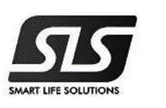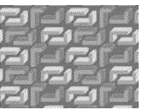Key Amendments of Taiwan IPO New Examination Guidelines for Trademark Disclaimers
Date: 4 September 2023
【Volume 118】
The Taiwan Intellectual Property Office (IPO) published the new Examination Guidelines for Trademark Disclaimers (“Guidelines”) on May 31, 2023, and the new Guidelines shall enter into force on August 1, 2023. Below is a summary of the key amendments and Wisdom Suggested Strategies.
1. Determination of whether a disclaimer is required
The new Guidelines made significant amendment to the determination of the necessity of disclaimers, expressly stipulating that whether a disclaimer is required depends on whether the non-distinctive elements in the trademark is likely to “give rise to doubts as to the scope of the right.”
The key principles are:
(1) When a non-distinctive element coined by the applicant or less commonly used by businesses is a combination of words that is descriptive of the goods or services, and the applicant may mistakenly believe they may claim the exclusive right to the element and the consumers and competitors may have doubts about whether such element has acquired trademark right, then there is need for a disclaimer.
(2) For a non-distinctive mark that is neither descriptive nor a generic name (e.g., surnames, slogans, idioms, slangs or other non-descriptive words or phrases) and is widely adopted by or its exclusive use is desired by businesses, when deemed non-distinctive, a disclaimer is required in order to prevent the applicant from mistakenly believing they may claim the exclusive right to such a mark. However, phrases commonly used on the market for blessing or promotional purposes do not require a disclaimer as the consumers and competitors will not have doubts as to whether such phrases have acquired trademark right.
(3) A disclaimer is required for a set of two or more Arabic numerals, model numbers or notations that are deemed non-distinctive. However, this does not apply to a set of numerals whose meaning is clear (e.g., specification, quantity, time, year, etc.) or commonly used in the field to represent good luck and fortune, and is deemed to cause no doubt as to the scope of the right.
(4) A disclaimer is required when the position, font size or proportion occupied by a non-distinctive element in the trademark may affect whether the applicant decides to claim such element. For example, a disclaimer is required when a non-distinctive element is designed and enlarged or made conspicuous, giving rise to doubts as to whether such element has acquired trademark right. However, this does not apply to those that are on the IPO’s list of items that do not require disclaimers.
2. Instances where Disclaimers are Not Required
The new Guidelines incorporated several instances that help illustrate when a disclaimer is not required:
(1)

The trademark is used on air compressors, compressors, power pumps, vacuum pumps, and water pumps, etc. Though placed in a prominent position, the phrase “AIR COMPRESSOR” is a direct description of the designated goods and it is not necessary to disclaim the phrase as competitors and consumers would not be mistaken to believe the trademark holder has acquired the exclusive right to the phrase.
(2)

The trademark is used on headphones, earphones, and wireless headphones, etc. The “Plug & Wireless” is a direct description of the designated goods, and a disclaimer is not required.
(3)

The trademark is used on black tea, black tea bags and tea, etc. The single numeral “2” would not give rise to doubts as to the scope of the right, thus a disclaimer is not required.
(4)

The trademark is used on royal jelly and honey, etc. The “Propoliz” in the mark is an incorrect spelling of the word “Propolis”, which means bee glue. As it is a direct description of the nature of the goods, there is no need to submit a disclaimer.
3. Instances where Disclaimers are Required
(1)

The trademark is used on light bulbs, lighting apparatus and installations, electric kettles, electric coffee percolators and toasters, etc. The “SMART LIFE SOLUTIONS” in the mark means “solutions to help live a smart life”, which is a marketing slogan. Therefore, a disclaimer is required.
(2)

The trademark is used on nutritional supplements, vitamin and mineral nutritional supplements and starch for dietetic purposes, etc. “KARDIO ANERGI” is an intentional play on “CARDIO ENERGY”, which is a direct description of the use or characteristics of the goods, and therefore would require a disclaimer. The disclaimer should be made on the phrase “CARDIO ENERGY”.
(3)

The trademark is used on swimsuits, etc. The “DIVING” is a direct description of the use of the designated goods. However, since it is placed in a prominent position and occupies an equal proportion as the device, there may be doubts as to the scope of the right. As such, a disclaimer is required.
(4)

This trademark is used on bicycles, electric bikes and electric-assisted bikes and their parts and components. The “S2” in the trademark is a model number and should be disclaimed.
(5)

The trademark is used on noodles, noodle-based prepared meals, hominy grits and instant noodles, etc. The Korean characters in the mark translate to “Zhajiangmian” in Chinese, which means noodles served with fried bean sauce. Since it is a foreign word not commonly known to the average consumer, a disclaimer should be made for “Zhajiangmian (Korean)”.
(6)

This 2D trademark is used on cosmetics and skin care products, etc. The image of a product container is not distinctive and requires a disclaimer.
(7)
 (enlarged:
(enlarged:  )
)
This pattern trademark is used on suitcases, purses, wallets and luggage covers, etc. The “LANCEL” in the mark is the word that distinguishes the source of the goods. The pattern for decoration is not distinctive and should be disclaimed.
(8)

The trademark is used in import-export agency services and retailing and wholesaling of agricultural supplies, etc. The “ehime” in the mark is the name of a prefecture of Japan, and thus requires a disclaimer.
Wisdom Suggested Strategies
The new Examination Guidelines for Trademark Disclaimers have been substantially revised to address the issue of “whether a disclaimer is required”.
Since such issue depends on whether the non-distinctive elements in the trademark is likely to give rise to doubts as to the scope of the right, the new Guidelines provided detailed examples illustrating the issues, and added the actual cases based on the results of the Taiwan Intellectual Property Office’s examination in recent years.
Moreover, the trademark register will not record any remarks if there is no doubt of scope for the non-distinctive elements in the trademark, for which a submission for a disclaimer is not needed. The applicants shall pay attention to this issue and avoid misinterpreting the “no need to submit a disclaimer” as “distinctive elements”.






